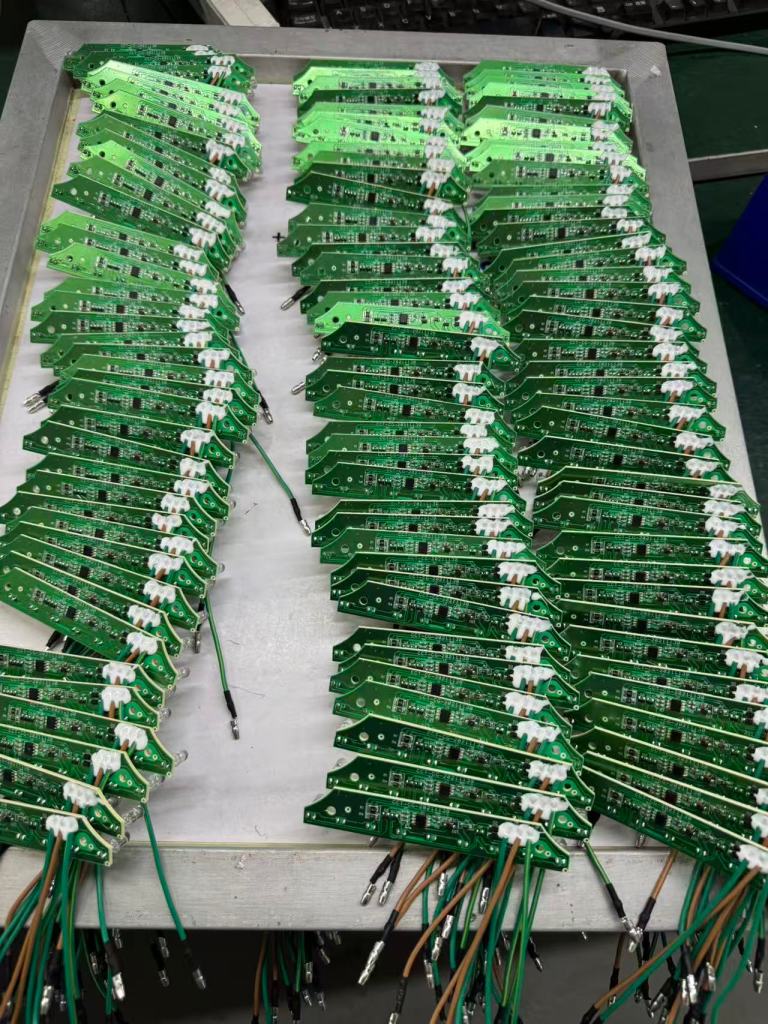Curious about PCBA? This guide explains the Printed Circuit Board Assembly process, its key stages, and why it’s critical for your electronic devices. Learn how a expert PCBA supplier can benefit you.
What is PCBA? A Comprehensive Guide to Printed Circuit Board Assembly

In the world of electronics, you’ve likely heard the term “PCB” or Printed Circuit Board. But what about PCBA? While these terms are often used interchangeably, they represent distinct stages in creating a functional electronic device. Understanding PCBA is crucial for anyone involved in manufacturing, designing, or sourcing electronics.
This guide will demystify the PCBA process, explore its key stages, and highlight the value of partnering with a professional PCBA supplier.
PCB vs. PCBA: What’s the Difference?
First, let’s clear up the confusion.
- A PCB (Printed Circuit Board) is the physical, non-conductive board that mechanically supports and electrically connects components using conductive tracks and pads. It’s the foundational skeleton of your device—empty and waiting for its vital organs.
- PCBA (Printed Circuit Board Assembly) is the process of populating that blank PCB with electronic components like resistors, capacitors, integrated circuits (ICs), and more. It’s the process of bringing that skeleton to life. When we say “PCBA,” we are usually referring to the fully assembled and functional board.
The Key Stages of the PCBA Process
A professional PCBA process is a meticulous sequence of steps to ensure quality, reliability, and efficiency.
1. Solder Paste Stenciling
The first step is applying solder paste to the appropriate areas of the bare PCB. A thin stencil is placed over the board, and a squeegee applies paste precisely onto the component pads. This paste is what will create the electrical and mechanical bonds later.
2. Automated Component Placement
Next, automated machines take over. Pick-and-place robots accurately retrieve surface-mount device (SMD) components from reels and place them onto the solder-pasted pads at incredible speeds. This automation is key for high-volume production and consistent quality.
3. Reflow Soldering
The assembled board then travels through a reflow oven. This oven subjects the board to a carefully controlled temperature profile, melting the solder paste without damaging the components. As it cools, the solder solidifies, permanently attaching the SMD components to the board.
4. Through-Hole Component Insertion (if needed)
For larger or more robust components (like connectors or large capacitors), 通孔技术(THT) is often used. This involves inserting component leads through holes in the PCB. This step can be done manually or with automated insertion machines.
5. Wave Soldering (for THT)
For boards with through-hole components, they typically undergo wave soldering. The board passes over a wave of molten solder, which bonds the leads protruding through the board to the pads on the opposite side.
6. Inspection and Quality Control (QC)
Quality is paramount. Assembled boards undergo rigorous inspection, which may include:
- Automated Optical Inspection (AOI): High-resolution cameras check for placement accuracy, solder defects, and missing components.
- X-Ray Inspection: Used to examine solder connections under Ball Grid Array (BGA) packages or other hidden areas.
7. Testing and Functional Verification
The final and most critical step is testing. The PCBA is powered on and subjected to In-Circuit Testing (ICT) or Functional Circuit Testing (FCT) to ensure it performs exactly as designed.
Why Partner with a Professional PCBA Service Provider?
Choosing the right PCBA manufacturer is a strategic decision that impacts your product’s success.
- Access to Advanced Technology: Save on the massive capital investment required for SMT lines, reflow ovens, and testing equipment.
- Expertise and Experience: Leverage years of process knowledge to avoid common pitfalls and ensure Design for Manufacturability (DFM).
- Supply Chain Management: A reliable partner manages component sourcing, mitigating shortages and price volatility.
- Higher Quality and Yield: Professional processes and strict QC result in fewer defects, saving you time and money on rework.
- Faster Time-to-Market: Streamline your production and accelerate your product launch.
Conclusion: PCBA is the Heart of Your Electronics
PCBA is more than just a manufacturing step; it’s the process that transforms a design concept into a tangible, functioning reality. By understanding the complexities involved, you can make an informed decision when selecting a manufacturing partner.
Are you looking for a reliable, high-quality PCBA partner? [Your Company Name] specializes in end-to-end PCB assembly services for global clients. From prototyping to mass production, we ensure your products are built to the highest standards.
[Contact Us Today for a Free Project Consultation and Quote!]
